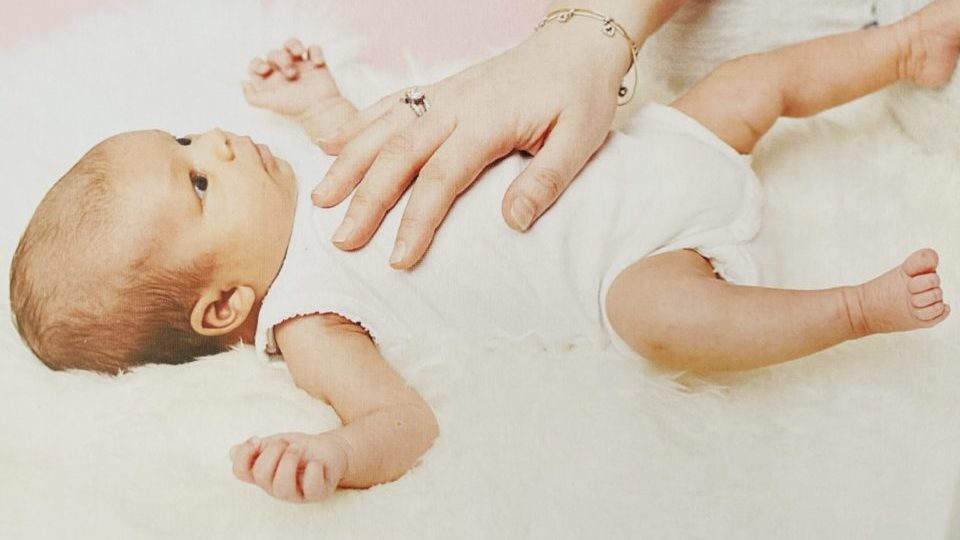
Holding and Handling Newborns
Any new parent can remember a feeling of helplessness and borderline despair when holding a new baby who cries in persistent but mysterious discomfort. Then some experienced person comes along, and the baby relaxes instantly in their calm, secure hold.
What is different? Can parents who have never held a baby before having their own learn this wonderful skill instantly? At Birthlight, our answer is YES, they can. And this learning is an essential aspect of Yoga, the art of being at one with oneself, not by retreating to a Himalayan cave, but at home in the daily routines of baby care. This is Baby Yoga.
What is relaxed holding?
Learning to hold a newborn in a relaxed way is a new and steep challenge because the change in one’s life is so sudden, and the need is NOW. Tension is natural when we feel insecure in facing the new challenges of babycare that are as physical as they are emotional and mental. What we call Baby Yoga involves an integrated bodymind state that comes with awareness of the release of tension and actively relaxing when holding your baby or anyone else’s baby. At Birthlight we call this ‘Relaxed Holding’ and we teach ways of doing this on our Nurturing Baby Massage and Baby Yoga training courses and you’ll find them in classes with teachers who trained with us. No previous visits to a yoga studio are required, nor any ability to do a sun salute or tree pose.
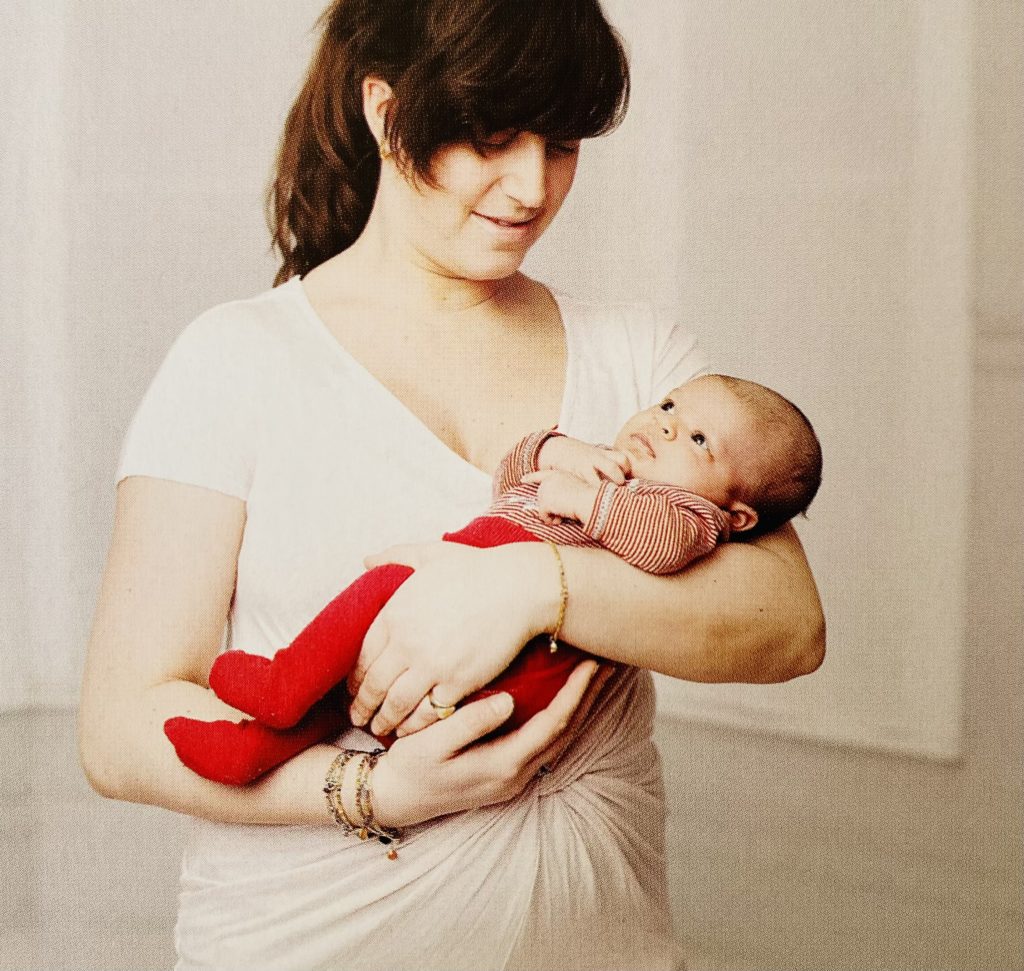
Responding to your baby’s crying or neediness with instant relaxation is a nonverbal way of transmitting safety and ‘I am here for you’ in a direct way to your baby. It is common and normal that a new baby’s demands may sometimes overwhelm tired parents and carers’ ability to always remain calm. You may feel yourself getting stressed out as your nervous system goes into sympathetic mode raising your heart beat. These are the moments to again and again consciously release tension and slow the breath. Gradually with practice, as your awareness grows and your attention to their breathing becomes more refined, the relaxation response can become a very beneficial habit. Babies also become attuned to this response. It is as if suddenly the world becomes safe and comfortable and all right to be in.
Once new parents embark on this journey of baby/self-discovery in interactive mode, the ups and downs of early parenting can become more exciting than daunting. Each baby is different, and each parent-baby interaction takes different forms, but growing together is eased for all by practising relaxation whilst holding your baby while babies are awake, in transition states or asleep. If you’re a bit of a perfectionist as a new parent, and like to focus on ‘doing’ by the book or if you and your baby had a difficult start it may take a little longer in remembering the ‘undoing’ of tension as a default mode. But eventually your baby’s rewarding responses will encourage you to persevere. Very simple physical yoga such as attention to the breath, letting go of tension in hands, arms, shoulders and neck, bending your knees slightly in standing to pacify a sore lower back can also create a physical ease that babies respond to.
At Birthlight, we give parents clear pointers about balance in holds, which is also an
element of yoga. Babies cannot be comfortable, and parents cannot relax if they hold their baby too high or too low. Once parents are helped to find the placement that is ‘just right’ on their bodies so that their shoulders and arms are free of tension, attention to the breath becomes easier too. As newborns respond to their parents’ positive intent to relax their holds, even if this is very tentative at first, parents begin to gain confidence not just in holding but also in handling their babies which means how to pick up babies and put them down, transfer them from one position to another in the arms of the parent and how to carry them around in an ergonomic way without a sling or baby carrier.
Infants need contact with parents’ relaxed bodies as they learn to feed, burp, and manage the complex process of digestion. Beyond the proven health benefits of skin to skin holding for premature babies, a simple application of the palm of one hand on a newborn’s tummy can be instantly calming. The skill of ‘positive touch’, that relaxes both the baby as recipient and the parent as touch-giver, is conveyed by an effortless demonstration with attention to a slow exhalation. The parent’s switch to the parasympathetic mode of the nervous system, the rest and digest, calm and connection mode, is received by the baby’s own nervous system, which is very sensitively tuned to loving carers.
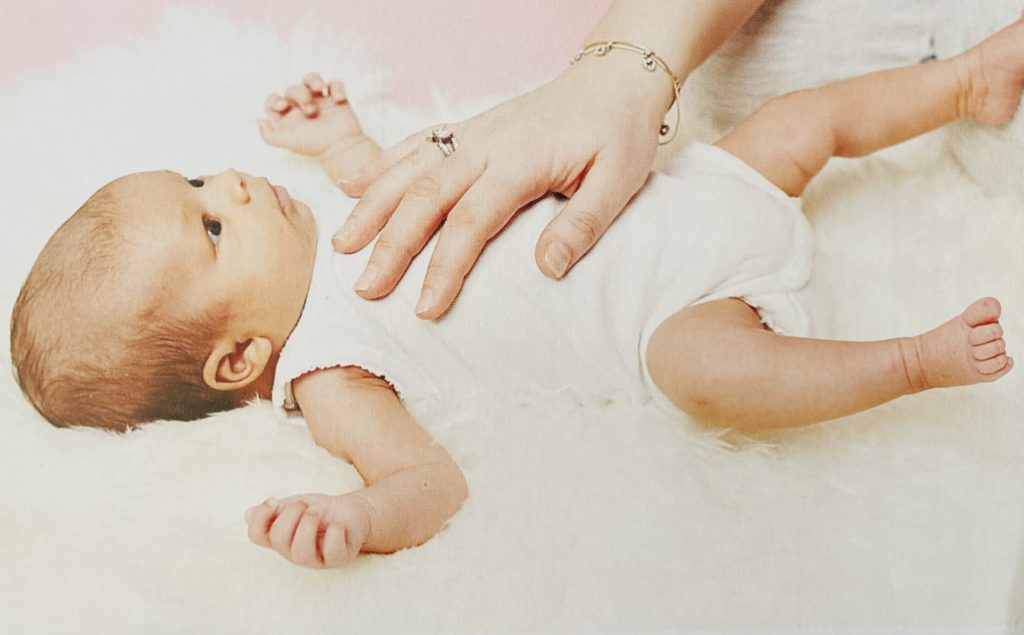
In Baby Yoga, babies are the yoga gurus. If parents hold them when they have just fallen asleep, -sometimes it feels like a miracle- they can observe how the babies’ letting go triggers a relaxation response through attuning with them. It’s virtually impossible to stay tense while holding a peacefully sleeping baby. Gradually, parents register their sensations and can reproduce them while babies are transiting to sleep. Repeated experiences lead to embodied awareness and soon to the ability to produce relaxation even when babies are not easily drifting into sleep.
Baby Wearing is related to Relaxed Holds as it is now a mainstream practice in our global urban culture, with many successful adaptations of traditional local devices to carry infants attached to parents’ bodies. Thanks to Frederick Leboyer’s book “Loving Hands” (1976), infant massage practices have spread from the slums of Calcutta to the world, and research has confirmed its many benefits not only for babies but also for massaging caregivers in a touch-mediated dialogue.
Baby Yoga is, however, more general than Baby Wearing or Infant Massage, as it applies to the most basic actions in the daily routine care of newborns: lifting and lowering them from beds, cots and floors, baths; holding them in arms with soothing rhythms. Also walking around with them and securing them in car seats. In these actions, babies’ experience is blended in synaesthesia: hearing, touch, vision, and movement all in one, with an affective dimension. At the same time as babies can teach parents, they also learn the day-to-day rhythms and moods of their parents. This learning experience contributes to shape their brains. Using yoga to integrate relaxation in the early weeks and months helps parents to adopt a calmer lifestyle around their babies that facilitates parenting in return.
Following their first encounter with newborns after birth, that thankfully is receiving more importance in global maternity care, parents can use Baby Yoga to keep a spontaneously interactive direct connection with them. What Marshall Klaus called “bonding” for lack of a better word is rarely love at first sight. Nor does it emerge easily from the ‘doing’ of early baby care, following books, apps and much conflicting advice. While facing the many external demands and norms to grow a healthy baby, it is easy to forget the interconnected “holding environment” we share from day one with newborns. Taking time for ‘being’ with them and attuning with them in Relaxed Holds, as Baby Yoga, is probably the most basic ingredient of newborn wellbeing as well as the foundation of an easier, more conscious parenting.
The Psychology behind Relaxed Holding
Baby Yoga is essentially interactive. In the early months, inter-action can better be
defined as inter-being, or ‘attunement’. The British psychologist Winnicott (1945) first developed the concept of “holding environment” to describe the psychic space shared between a mother and her infant, as neither wholly psychological nor physical. Empathy with the baby encompasses holding, allowing the infant’s ego to integrate and his instincts to be fulfilled (Winnicott, 1960). Fathers now also share this intersubjective space with their newborns. For both parents, instant relaxation can diffuse difficult emotions linked with pain or unfulfilled needs, whether of their babies or their own. Holding the baby then is not just a physical act, but it includes an acknowledgement of the shared psychic space where parents and babies grow together in interaction.
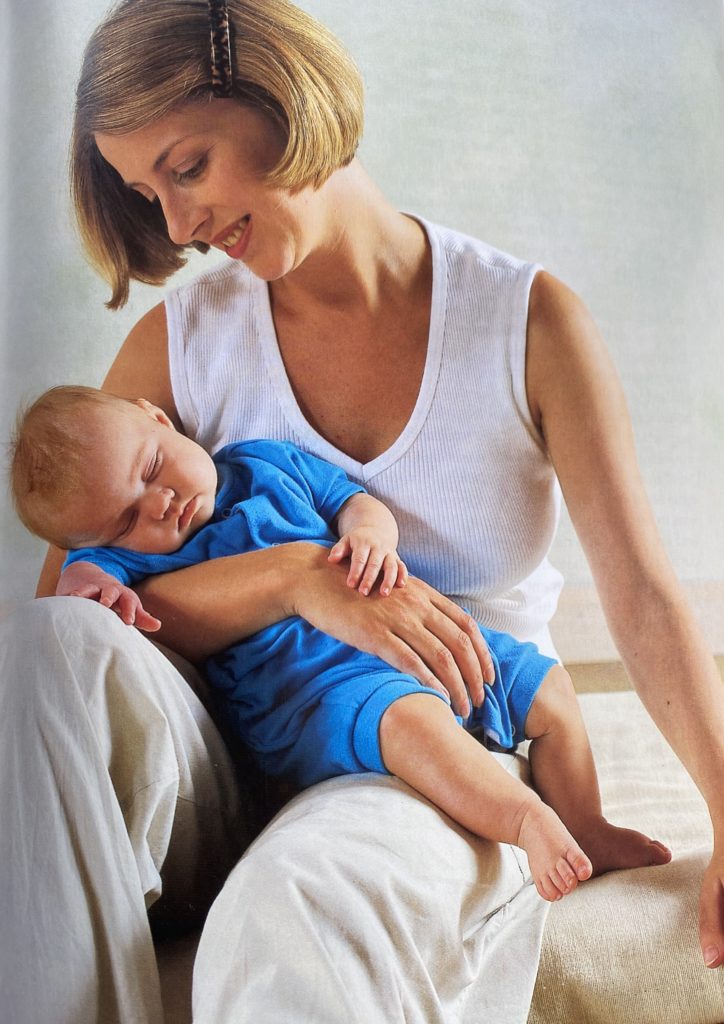
Winnicot’s “holding environment” supports babies’ slow transition to self-awareness in the second half of the first year and beyond with a rather open-ended view of what was later called “co-regulation”. This is the process through which parents and infants mutually learn to navigate emotional responses in response to one another. “Containment” is similar and yet fundamentally different from holding and co-regulation. Bion’s theory of containing (1962) originates from the idea that infants project onto parents feelings that are upsetting, fearsome, painful or in some other way intolerable. Parents in turn feel the emotion themselves, but instead of reacting to it, they contain it and give it back to the infant in an adapted and contained form that can be assimilated. The end-result of emotion containment is admirable, but it requires a lot of parental self-control that may not be easily available if parents have not experienced effective containment of their own emotions in early childhood or to parents finding themselves in overly challenging circumstances or suffering from anxiety, depression or other health issues. This is where attending a group baby class can be a life changing support.
In Baby Yoga, we focus on ‘Relaxed Holds’ as a practical basis to achieve co-regulation and containment without having to understand these concepts. In the same way as swaddling can help babies whose extreme disorganised movements benefit from calming containment of limbs, we use ‘containing holds’ to create a feeling of security for the baby in their parents’ arms. Little babies love to be held in ‘cradle hold’ with parents’ arms wrapped around their bodies.
As babies open to the world in their fourth and fifth months, Relaxed Holds become freer and more adventurous to respond to babies’ greater need of movement in space. Building on the base of calming, relaxed inter-being, parents can progressively engage in more inter-acting games to their babies’ delight and their own (read more in Part 2).
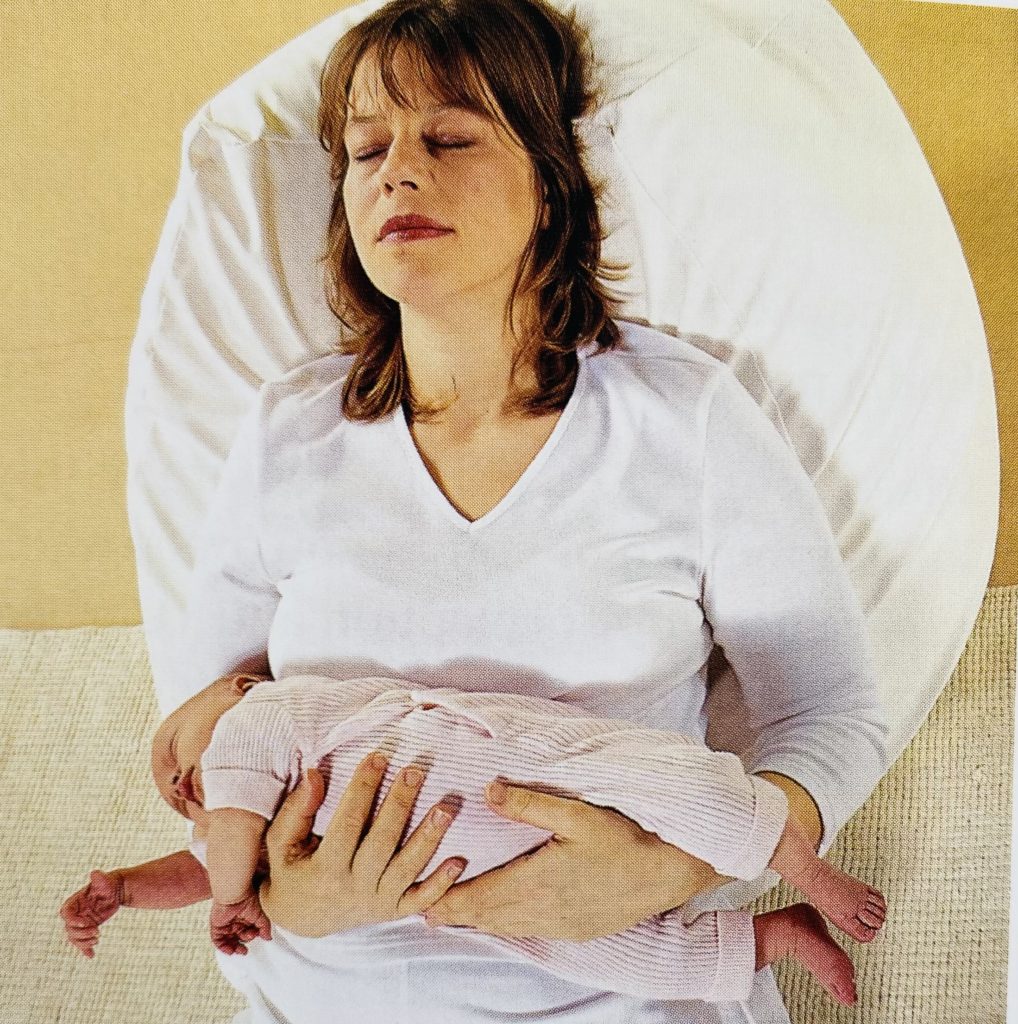
See more in Françoise’s two books: Baby Yoga, Gaia Books, 2000 and Yoga for Mother and Baby, Cico Books, 2010
Next training courses:
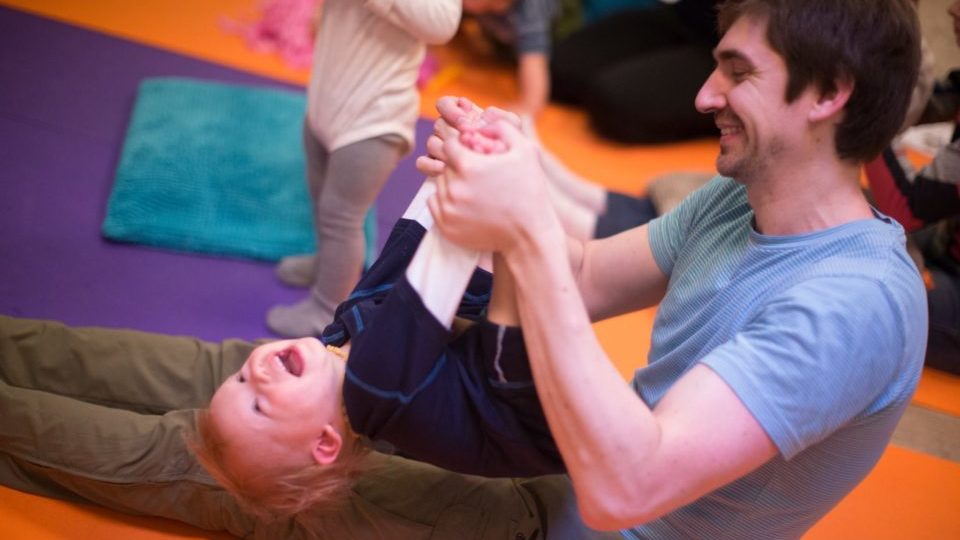
Baby Yoga Course (UK)
June 2023
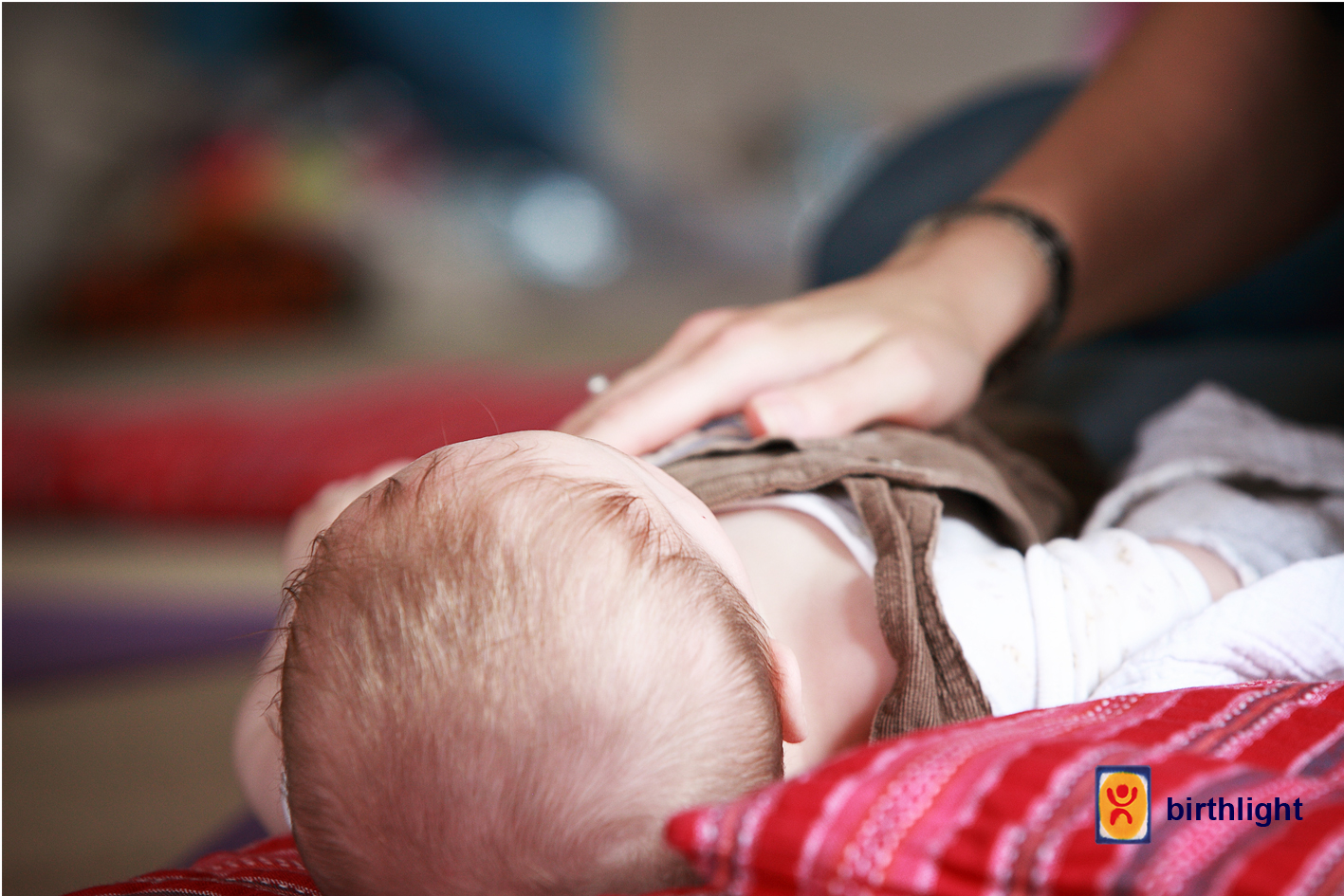
Baby Yoga Course (Paris)
June 2023
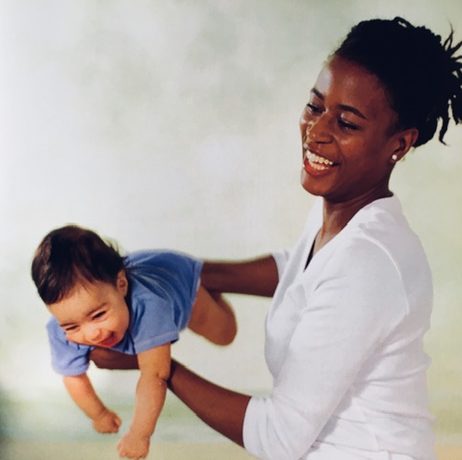
Baby Massage & Yoga Course
July 2023
References
Winnicot, Donald. 1945. Getting to Know Your Baby London: Heinemann.
Winnicot, Donald. 1965. Maturational Processes and the Facilitating Environment: Studies in the Theory of Emotional Development. London: Hogarth Press.
Bion, Wilfred R. 1962. Learning from Experience. London: Heinemann.
Leboyer, Frderick. 1976. Loving Hands: the traditional Indian art of Infant Massage. Knopf Doubleday Publishing.